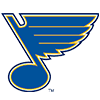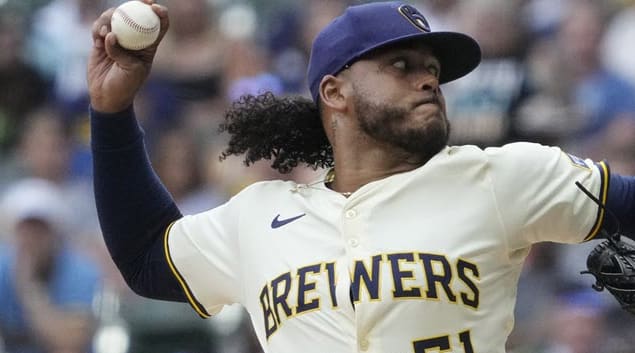This Week's Scouting Tip: Seeing is Believing
Every year a couple of new metrics surface that allow avid fantasy baseball followers to quantify an amazing range of statistical benchmarks for ability. There is xERA, BABIP, FIP, and many more formulas used to gauge a pitcher's performance. They all tell a story, they all have a place in the overall analysis, and they are all useful in establishing anticipated values for players. I admit, I look at all of them with intense interest, and I do use them as a tool for scouting pitchers. However, perhaps being at least a bit old-fashioned (yes, I remember when a radar gun was a new-fangled contraption), I still rely heavily on what I "see" when checking out a pitcher, and that is the most influential aspect of my evaluation. You should certainly use the latest statistical tools, but there are some significant benefits to actually seeing your guy pitch. Let's take a look ...
Exploring it further:The benefits of watching a pitching performance ...
The reason for this week's Scouting Tip is really pretty simple. I read evaluations of pitchers every day. Some are excellent, some are suspect, but they are all interesting on some level. However, the ones I find most disturbing will often engender a mumbled comment that goes something like, "Has this person ever actually seen this guy pitch?" The statistical outlay might be exceptionally well researched, the findings might offer a fairly strong reason to buy into the conclusions,
This Week's Scouting Tip: Seeing is Believing
Every year a couple of new metrics surface that allow avid fantasy baseball followers to quantify an amazing range of statistical benchmarks for ability. There is xERA, BABIP, FIP, and many more formulas used to gauge a pitcher's performance. They all tell a story, they all have a place in the overall analysis, and they are all useful in establishing anticipated values for players. I admit, I look at all of them with intense interest, and I do use them as a tool for scouting pitchers. However, perhaps being at least a bit old-fashioned (yes, I remember when a radar gun was a new-fangled contraption), I still rely heavily on what I "see" when checking out a pitcher, and that is the most influential aspect of my evaluation. You should certainly use the latest statistical tools, but there are some significant benefits to actually seeing your guy pitch. Let's take a look ...
Exploring it further:The benefits of watching a pitching performance ...
The reason for this week's Scouting Tip is really pretty simple. I read evaluations of pitchers every day. Some are excellent, some are suspect, but they are all interesting on some level. However, the ones I find most disturbing will often engender a mumbled comment that goes something like, "Has this person ever actually seen this guy pitch?" The statistical outlay might be exceptionally well researched, the findings might offer a fairly strong reason to buy into the conclusions, but in some cases, there were other considerations that simply do not lend themselves to a finite evaluation. I would definitely encourage everyone to use every tool available when making a decision on the value of a pitcher, but try to have an actual look, whenever possible, before making your call.
One of the first things to consider when you watch a pitcher is the stress level of the game. There is a big difference between pitching from the windup with a comfortable lead across several innings, and continually pitching from the stretch in a one-run game with the tying or lead runs on base, often in scoring position. The latter scenario is like living in a pressure-cooker, it typically saps the pitcher's energy, and makes every pitch a matter of winning or losing. Pitchers with the innate ability to actually thrive in those conditions are worthy of your undivided attention. Let's consider a very good example - Tim Lincecum. Watch Lincecum when he gets into a jam, or when he feels the need to pick up a teammate who just made a critical error. How often have you heard the comment, "he took it up a notch" or "he reached back for a little extra." Those are traits that don't typically translate into statistical analysis. You have to see it to believe it.
Here's another consideration. Did you ever realize that some of the best pitchers will often produce somewhat clouded statistical results when they play for a team that routinely gives them a lot of run support? It's true. Pitchers, especially the better ones, don't focus on your WHIP, ERA or strikeouts. They focus on winning. That said, when they have a big lead, their job changes. To best help their team, they have to throw strikes, pitch as deep as possible into the game, and get their teammates back to the plate as quickly as possible. They might challenge a hitter with a pitch in the middle of the plate rather than trying to make the perfect pitch and risk a walk. Sometimes, they get burned, but they are doing what it takes to win, despite the potential damage to their own personal statistics. Over the course of a season, these extra hits can add up.
Here are some things to consider for when watching a pitcher:
- Always make note of a pitcher who frequently takes his performance up a notch when things get ugly. Rather pedestrian statistics can be misleading when the pitcher you are evaluating consistently overcomes adversity, and continually keeps his team in games, giving them a chance to win. That young guy that finds himself with runners on 1st and 3rd and no outs, then strikes out the next two hitters with exceptional stuff will probably perform even better as he develops.
- Be somewhat forgiving of base runners, and even an extra earned run or two when the pitcher allowed that stat damage after the game was in his pocket. Conversely, a pitcher who cannot or will not throw strikes when he is protecting a large lead is unlikely to be able to throw quality pitches when he really needs to.
- It may seem fairly obvious, but there is also a big difference between bloop hits and laser shots. While this tends to average out statistically over the season, there are some pitchers who always seem to make major mistakes at the most inopportune times. When those laser shots increase in frequency as the game enters a critical stage, that pitcher may lack the presence to get it done. This is particularly important when looking at a relief pitcher's make-up when evaluating his potential to close. Ever wonder why that great set-up guy failed as a closer?
- Finally, look at the pitcher's ability to adjust. When he doesn't have his best stuff, or a couple of his pitches just aren't working, can he get by? If the opponents are squaring everything up, resulting in a few early runs, can he find a way to stay out there, or does the manager feel he has to go to the bullpen or risk scratching this game off as a loss? A manager's confidence in the pitcher to make timely adjustments is a strong indicator of that pitcher's mound presence.
Now, let's check this week's Scouting Notebook ...
This continues our weekly feature scouting pitchers of interest. We won't normally cover the elite guys in this column, rather this forum is dedicated to finding pitchers who might help, and more importantly, might be obtainable (as well as pitchers to avoid). Alright ... let's get started with this week's featured arms:
Jake Arrieta (BAL)@ KC - The Orioles have quite a collection of talented young arms including Brian Matusz (who will hopefully be back from a DL stint in a couple of weeks), Zack Britton, Chris Tillman, and our guy for this week, Jake Arrieta. Lefty Matusz is the marquis member of that group, however Arrieta is showing signs of fulfilling the promise he demonstrated when drafted in the 5th round of the 2007 draft. He had a short trial last season and struggled with his command - the only thing that has slowed his progress. He still has some shaky moments, but there has been very evident improvement in the repeatability of his delivery, and results so far this season. Currently, he is 4-1 with a 4.35 ERA and a 1.25 WHIP having struck out 33 in 39.3 innings.
Arrieta features a solid fastball with movement that sits in the 91-94 range, and he has been more consistent with both the cutter and slider he mixes in, especially against lefties. He will also throw an occasional curve and change-up to provide more speed differential, but these are both still works in progress. With the cutter and slider in the sitting in the mid 80s, a more reliable off-speed pitch like a curve or change should give him an even more effective arsenal.
He likes to crowd lefties and he was particularly effective with that tactic in the game against the Royals. Against righties, he frequently uses the fastball, adding and subtracting a few miles per hour, and varying the location, including the ability to pitch up and down in the zone. His only real mistake was a "rolling" curveball to Jeff Francouer that he left up and out over the plate. He pitched seven innings, but as sometimes happens, he was not commanding the strike zone, especially early on, and that led to a higher pitch count. In fact, he threw strikes on the first pitch to only two of the first 16 batters he faced. The good news - once he locked in, he cruised through the last four innings he pitched and ended up with eight punchouts.
Don't expect an ace if you add Arrieta to your staff, he really projects as a middle of the rotation fantasy starter. However, as he learns to throw more strikes and to trust his impressive repertoire, he will generate plenty of strikeouts (he led the O's organization in strikeouts while in the minors in 2009 with 148), and he has the ability, both mentally and physically to pitch out of jams, which always helps the ERA. Further, he has a nice smooth motion and could contribute 200+ innings a season as he matures. Right now he is a good back of the rotation option, but in keeper leagues he offers plenty of ceiling.
Rick Porcello (DET)vs. NYY - It can be pretty easy to forget that Porcello is still just 22 years old despite having virtually two full seasons in the major leagues. He was a highly touted draft choice out of high school in 2007 and was a fixture in the Tigers rotation by 2009 without ever having pitched above A-ball. He performed admirably that season, but took a bit of a step back in 2010, resulting in a brief stint at Triple-A. He threw just 28 minor league innings and came back to Detroit with a more defined approach.
In watching his start against the Yankees, Porcello appeared to be a pitcher in transition. His best weapons are a sinking 2-seam fastball and a tight slider, also with good, crisp downward movement. He also occasionally throws a curveball, but his change, which has been a plus pitch at times, was not working consistently for him in this game. Interestingly, when Porcello first arrived his fastball sat in the 91-93 range, and could occasionally jump up to 95 - against the Yankees, it never topped 92 and was generally in the 89-91 range. That dip in velocity is perhaps part of the change to his approach. He was a power pitcher when he debuted, but he cannot really afford to pitch up in the zone with his current repertoire. He is collecting more strikeouts by varying delivery speeds, however he was not always staying on top of the ball, which caused pitches to flatten out and drift up in the strike zone - and that's not his game, he has to stay down, and rely on the excellent movement. There will be growing pains, but he's becoming a pitcher.
His pedigree suggests there is still much more to come from Porcello as he matures. He has a reputation as an intelligent pitcher with a tireless work ethic. With his skills, that is likely to translate into a successful career. The natural sinking action on his fastball and the crisp drop on his breaking pitches will always lead to a lot of ground balls, while consistency spotting his pitches and changing speeds will bump up the strikeout rate.
Julio Teheran (ATL)@ PHI - While Teheran has already come and gone - he was reassigned to Triple-A Gwinnett after Saturday's game - it's always a pleasure to take a look at a promising young arm. He pitched four and two-thirds innings in his major league debut, allowing four hits, two walks, and three earned runs while striking out just one Philadelphia hitter. He threw 51 of 86 pitches for strikes and took the loss in a 3-0 Braves defeat. It's generally not a great idea to evaluate a pitcher based on his major league debut, but we can forgive some of the negatives and look for positive signs.
Teheran displayed a lot of talent although he is definitely better off refining his skills back in the minors. He showed a quality fastball at 91-93 and he could dial it up to 95-96 when necessary, however it was a bit straight at times. He struggled with his command throughout most of the game, especially with the straight change. His first "mistake" was a 2-0 fastball to Ryan Howard that got too much of the plate and easily cleared the centerfield wall. The next inning, again behind in the count, this time to Shane Victorino, he threw another get me over pitch that Victorino lined into the gap for an RBI triple. When he spotted the change well, it was effective, and he did change speeds pretty well, but he will need to get ahead of hitters consistently to realize his true potential.
This was just a teaser. No matter how he pitched, Teheran was going back to the minors for more seasoning. He could be back later this season, although Mike Minor is probably the preferred fill-in should the need arise again. It's more likely he will come back in September, and depending on his workload during the year, perhaps throw a few big league innings then. There is no question he has considerable upside as he showed in our game with both his stuff, and his ability to pitch through adversity (see above) so if you are in a keeper or dynasty league, and you needed a major league appearance to make him roster eligible, jump in. He could begin to pay big dividends as early as 2012.
Some short takes:
Homer Bailey (CIN)- Returned to action last Thursday after beginning the season on the disabled list. He threw 62 of 95 pitches for strikes allowing four hits and one run while striking out seven in his 2011 debut. He is probably worth an add in most formats if he is available in your league.
Brandon Beachy (ATL)- We were taking a wait and see stance early on, but it may be time to say we waited and we saw. Beachy is generating an exceptionally high swinging strike rate with his solid fastball complimented by a very sharp slider and a nice change. His performance thus far has been a real bright spot for Atlanta.
Jonathon Sanchez (SF)- When he is mechanically sound, he is one of the most dominant pitchers in the game. Unfortunately, he has struggled with his release point so far in 2011 and it's always difficult to predict when he will lock in. While it will be risky to send him out in your fantasy lineup, it is almost as dangerous to sit him.
John Danks (CWS)- It would be difficult to pitch as well as Danks has so far this season and still be 0-5 but that's where he stands. The White Sox have struggled mightily, but there is too much talent on that team for it to last so a breakout has to be anticipated. When it happens, Danks could string some wins together.
Jhoulys Chacin (COL)- Ace Ubaldo Jimenez has been scuffling, but the Rockies are still playing well and Chacin has been a major contributor. He is not a #1 in a fantasy rotation, but he can be a solid and reliable middle of the rotation option.
John Lackey (BOS)- Many suggest that Lackey will bounce back from a sub-par 2010, but so far this season, he has primarily bounced into the showers fairly early. He will likely win a few games with Boston's offense on his side, however he is not likely to help your fantasy team in any other category.
Mark Melancon (HOU) -Brandon Lyon has been diagnosed with biceps tendonitis, a partial tear in his rotator cuff - and overall ineffectiveness - which has given Melancon the opportunity. He has closer stuff including a mid-90s fastball and a sharp 12-6 curve so there are reasons to believe he can succeed long term in his new role.
Sergio Santos (CWS)- The White Sox bullpen has been a mess most of this season, but Santos has stepped up and appears to be locking down the closer's role. He was brought in against Seattle with the score tied, and then remained in the game after the Sox took the lead. Guillen clearly doesn't trust other members of that pen.
Eduardo Sanchez (STL)- The Cardinals have been playing musical closers ever since Kyle Franklin was removed from the role, however manager Tony La Russa is leaning more and more heavily on Sanchez. He probably won't be the only guy getting saves, but he might be a slight favorite right now.
Francisco Rodriquez (NYM)- He has converted all but one of his 2011 save opportunities and he has a 1.17 ERA, but he also sports a WHIP that has hovered dangerously close to 2.00. If he keeps putting men on base at that rate, the roof will eventually collapse. Dare we start whispering the name, Izzy?
Kid's Corner ...
Anthony Ranaudo (BOS)- He is still at least a year away from the major leagues, but he is well worth watching as he is likely to move up quickly. With a heavy fastball in the mid 90s, a plus curve and a developing change he has the tools. He already commands the strike zone very effectively when he is in synch (like many tall young pitchers his release point can come and go) and he is in synch more and more often. He probably has a ceiling just under Jon Lester which would make him a valuable fantasy property.
For some of the most in-depth coverage of all things pitching in fantasy baseball for 2011, visit www.bogfella.com and be sure to follow @RotoWire and @bogfella on Twitter.




























